Coco Coir, or Coconut Coir, has become one of the favorite and most used growing mediums for hydroponic plant growers.
This growing medium has great water and oxygen retention, making it the perfect growing medium as it provides hospitable conditions for root systems development and optimal plant growth.
Coco Coir is an effective cost alternative for growing medium that can be used in most hydroponic systems.
- Related article: Hydroponic Growing Media
We’ll take a look at what exactly hydroponics Coco Coir is made of, the different types of coir, some comparisons between them, and some useful tips for using Coco Coir in hydroponic gardens!
What is Coco Coir
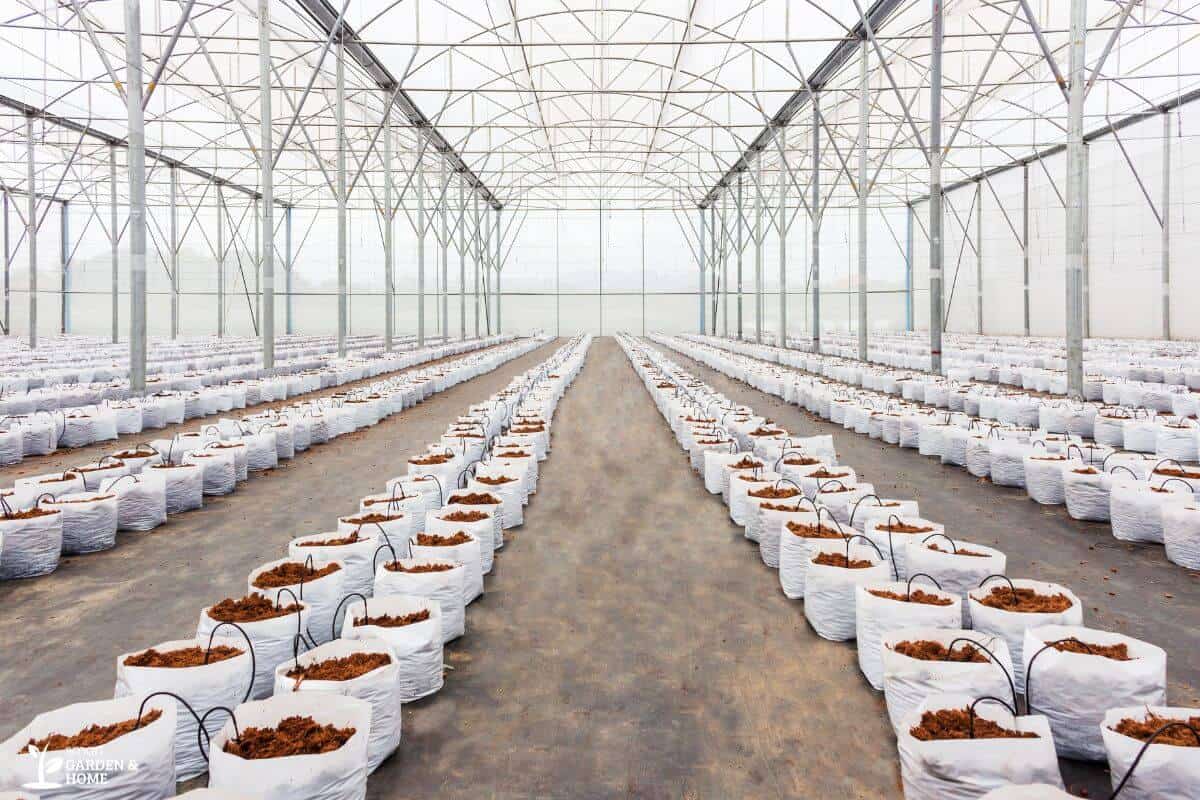
Coco Coir is a common growing medium used in hydroponic systems as it has great water and oxygen retention.
The fibrous texture and coarseness of coir fibers add a unique aesthetic to your hydroponic system.
This growing medium is completely natural and made from the fiber extract found between the husks and outer layer of a coconut.
The coconut fibers are then dried and turned into ground into a growing medium.
Types of Coco Coir Grow Medium
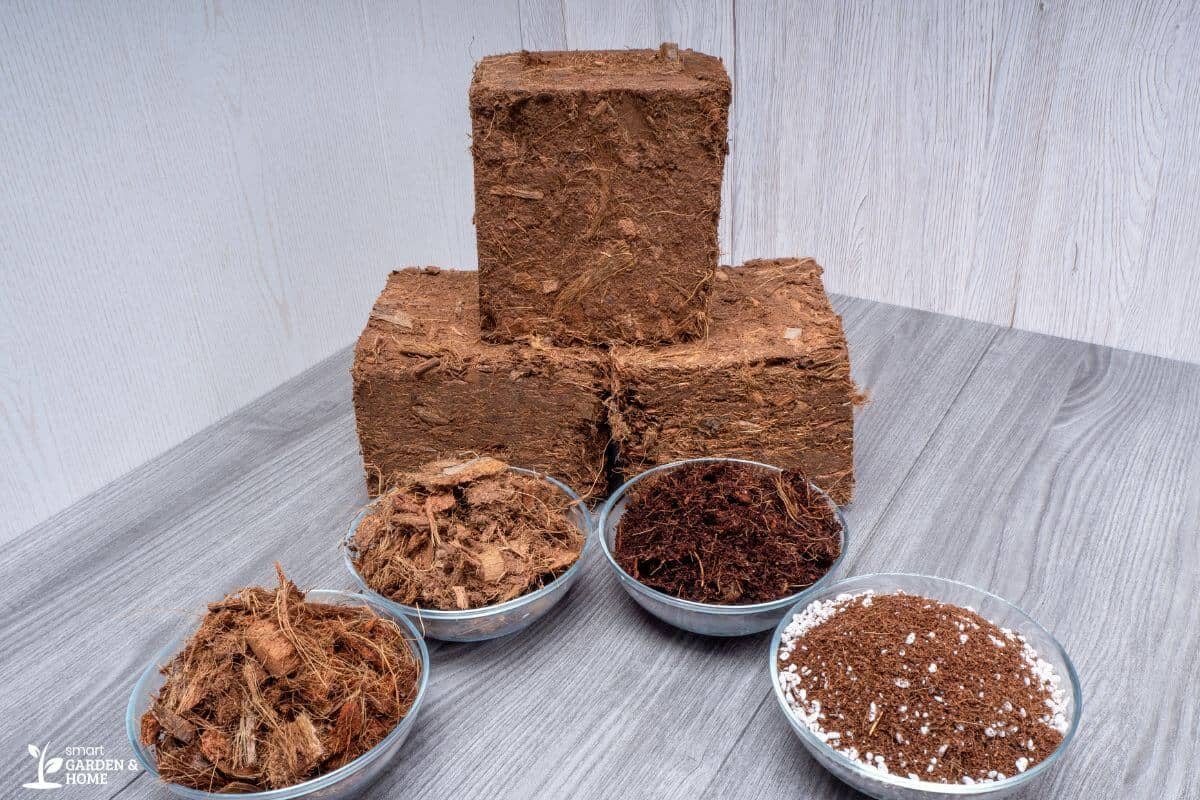
If you are wanting to buy some Coco Coir growing medium for hydroponics, there are three common types of Coco Coir options: the pith (Coconut Peat), the Fiber, and the Coco Chips.
All three of these compounds provide a great growing medium for hydroponics, and individually they each have their own unique benefits.
Coco Peat, or otherwise referred to as the Pith, resembles a finely-ground coconut.
In its finely-ground and efficient form, Coco Peat is extremely absorbent of water and may cause the roots of your plants to drown.
Prior to it being used, it must be aged and thoroughly dried as it contains harmful salt content that will kill your plants.
Coco Fiber, or Coir Fiber, on the other hand, is not as absorbent as Coco Peat but rather adds air pockets into your growing medium.
The Coco Fibers are long and stringy, which resemble tufts of hair. These fibers break down rather fast, and the air pockets will diminish over periods of time.
Coco Chips, or Coir Chips, re a natural type of pellet. They are similar in design to Clay Pellets, although they are made entirely from plant matter.
These chips are thought of as a hybrid between Coco Peat and Coco Fiber because they are absorbent and large enough to allow air to flow through the roots of your plants.
Coco Coir vs Coco Peat
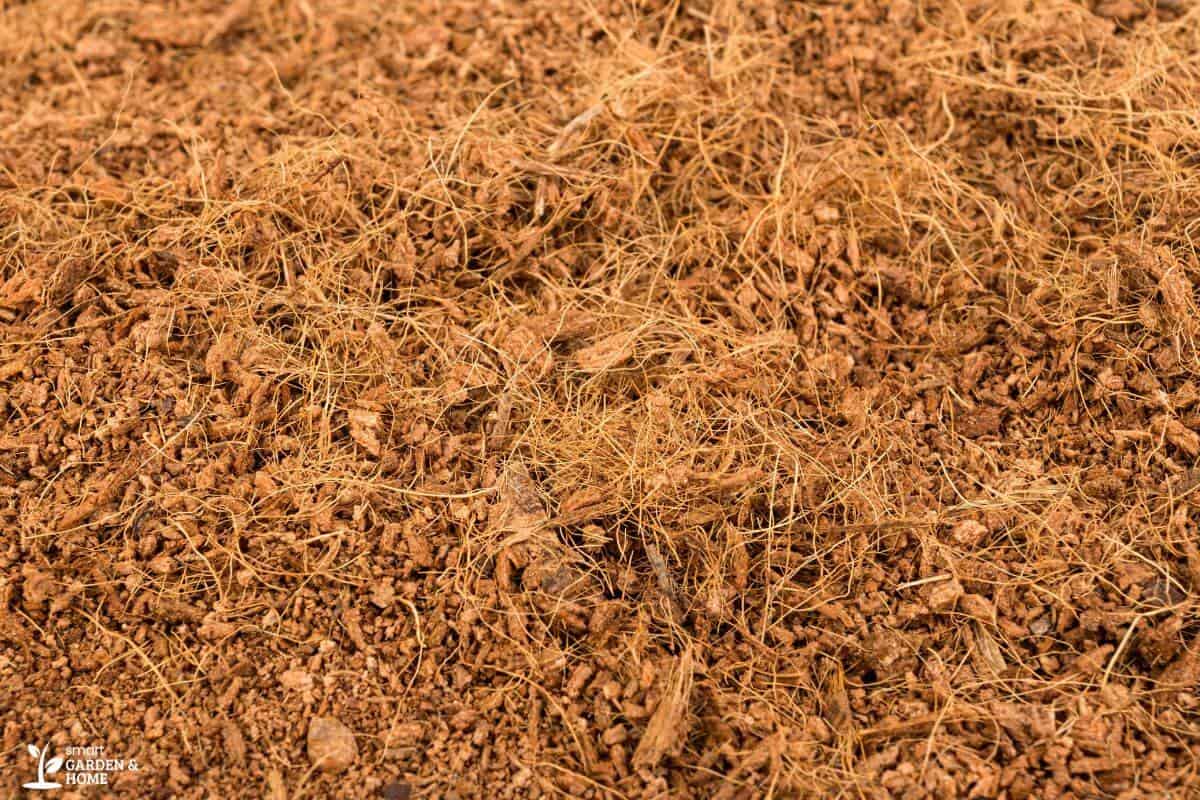
As mentioned above, Coco Coir is a natural product that is made from the outer layer of fibers that surround a coconut, while Coco Peat is made from the coconut husks.
Although these two growing mediums are both derived from renewable resources, which are coconut shells, they both have their own unique characteristics.
Read more about the differences in this comparison article – Coconut Coir vs Coconut Peat.
Drainage and Aeration
Coco Peat absorbs more water than Coco Coir and is preferred when growing plants that have higher intake of water.
Whilst Coco Coir is fibrous and provides greater aeration and drainage for plant roots.
Texture and Color
Coco Peat has been finely-ground, so naturally, it has a light and fluffy texture, and typically comes in a white or light brown color.
Whereas Coco Coir is fibrous and often coarse, and it comes in a much darker brown to reddish color.
Tips for using Coco Coir in Hydroponics
1. Hydrate and Rinse Before Use
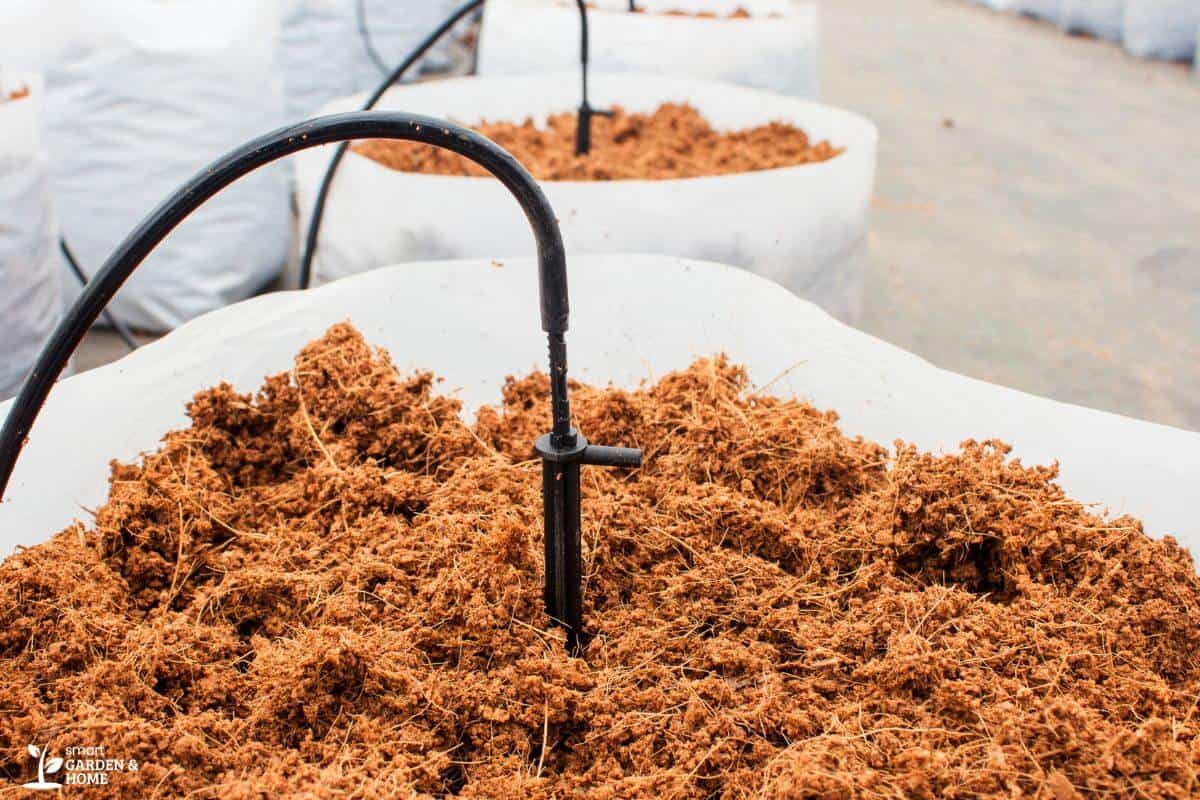
Coco Coir is generally sold in a compressed brick, which will first need to be soaked in a warm water bath before it can be used.
There should be instructions as to how much water must be added per kilogram of Coco Coir.
Coco Coir naturally contains high volumes of salt and will need to be thoroughly washed in clean pH-balanced water.
You must continue to wash and strain the water from the Coco Coir until the tannins in the water are completely washed out.
Tannins will add a brown tint to your rinsing water. When the water begins to run clear, it’s an indication that the extra salt has been completely rinsed out.
Make sure to use a rather large container when hydrating the Coco Coir, as it will expand to about seven times of its original compressed size.
A versatile alternative if you want to save some time would be purchasing Coco Coir that has already been buffed from coir stores.
2. There are No Nutrients in Coco Coir
One of the setbacks with using Coco Coir as a growing medium is that its void of plants nutrients. Most plants require calcium, magnesium, nitrogen, and potassium to grow.
The traditional hydroponic additional nutrients have high levels of potassium and phosphorus.
These high levels are not needed when using Coco Coir. It’s best to use a Coco Coir-specific nutrient supplement for your hydroponics system.
Some key hydroponic nutrients that will need to be supplemented are calcium and magnesium.
Let’s not forget about nitrogen—there should be high levels of nitrogen contained in your nutrient-rich solution as it will support the development of microorganisms.
3. Buffer your Coco Coir
Buffering and washing Coco Coir is not the same thing. Washing your Coco Coir will get rid of some of the high salt and potassium content.
Most nutrient suppliers have created their own buffer mix that can be added to your Coco Coir. This will lessen the high levels of salt and potassium in your Coco Coir growing medium.
4. Add Perlite for Better Drainage
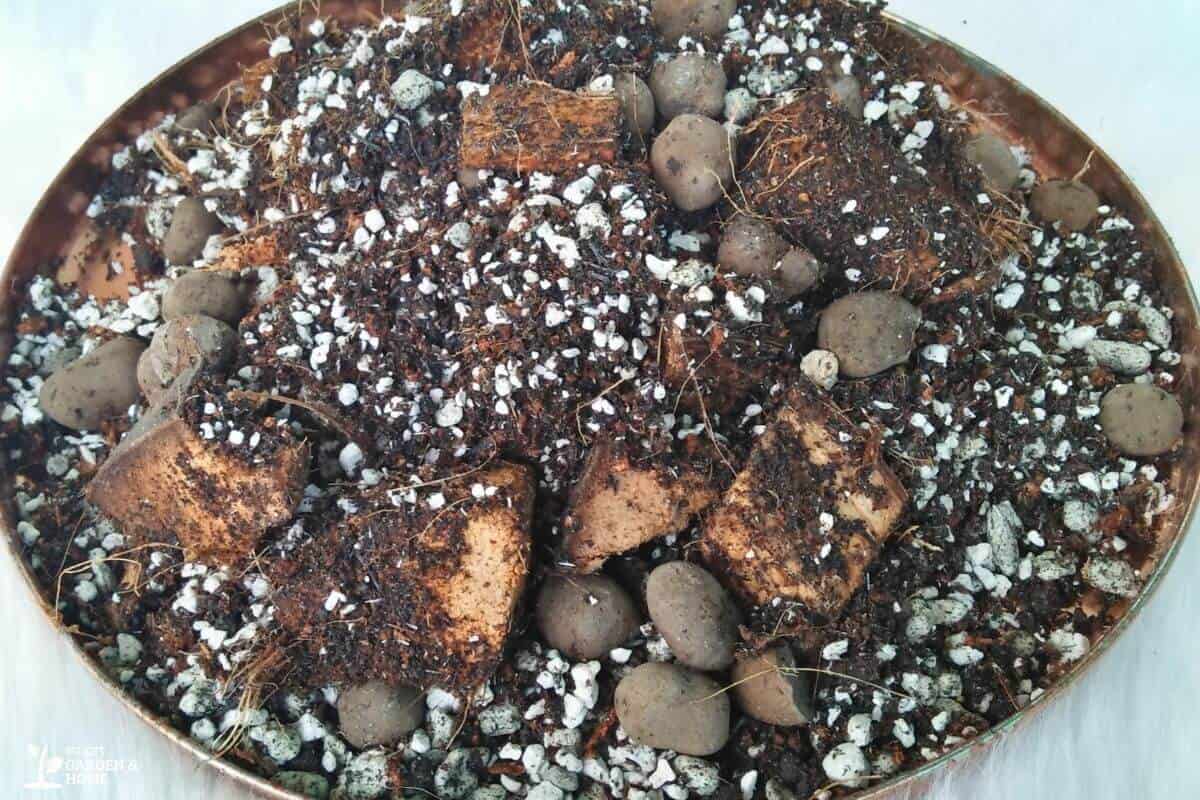
One of the advantages of using Coco Coir is that it has great water retention. However, this can also be a downfall for some plants that don’t necessarily enjoy being kept wet.
If you plan on growing succulents or any other type of plant that requires root space, add Perlite to your Coco Coir growing medium.
Adding Perlite to your coco coir substrate will improve drainage. Perlite has a neutral pH balance and works efficiently with Coco Coir.
5. Increase the Levels of Oxygen
The fibrous texture of Coco Coir provides space for air pockets so that oxygen can reach the roots of your plants.
However, when you first hydrate your Coco Coir, it can become rather thick and clumpy, thus limiting your plant roots’ access to oxygen.
Adding glass stones to your Coco Coir growing medium will improve the aeration levels in your hydroponic system.
It’s important to break up any clumps of Coco Coir that may occur after it has been hydrated for the first time.
Final Thoughts on Coco Coir as Hydroponic Growing Medium
Hydroponics Coco Coir provides an innovative and eco-friendly solution for modern gardening practices.
With its versatility and many benefits, including water retention, aeration, and pH balancing, Coco Coir is quickly becoming the go-to growing medium for beginner growers and experienced growers worldwide.
From beginners to seasoned experts, anyone can easily incorporate Coco Coir into their hydroponic setups and enjoy the positive results.
So if you’re looking to grow nutritious and healthy plants, consider using Coco Coir as your growing medium and take advantage of its many benefits.
With its great potential in promoting sustainable and efficient farming, it’s no wonder that Coco Coir is the latest buzzword in hydroponic gardening!
Check out these interesting articles to know more facts about hydroponic growing media:


